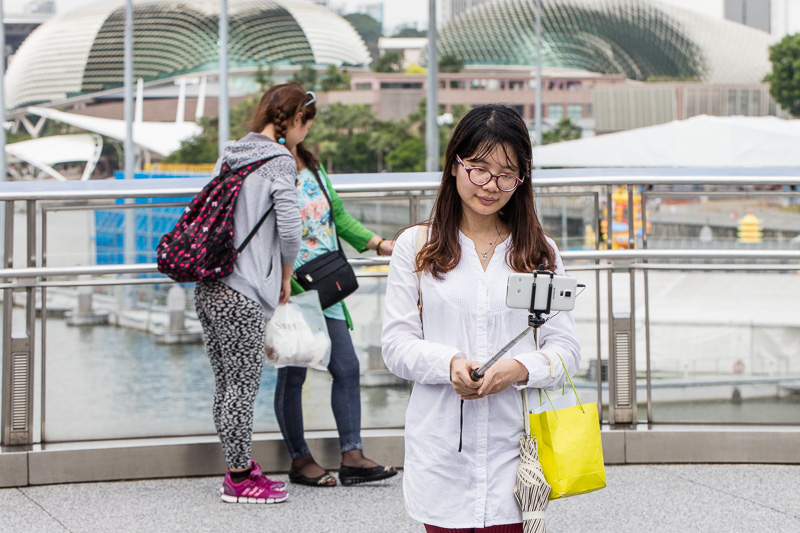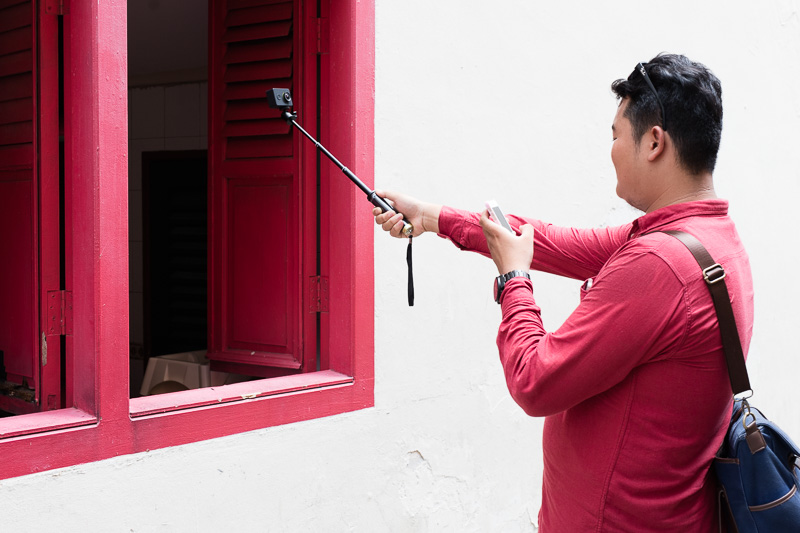Last summer, during Toronto’s 2015 PanAm Games experience, I noted a general rise in the prevalence of selfie sticks. It was an impression I had, but nothing I could back up with carefully gathered statistical evidence. That impression returned to me with redoubled force during my January visit to Singapore. Everywhere, tourists were trying to place themselves in shots of buildings, sculptures, signage, restaurants.

The most egregious example of this appeared as I was walking through The Cloud Forest, a giant enclosed tropical rainforest environment (which seems kind of odd given that Singapore already is a tropical rainforest, or would be if it weren’t for all the concrete). I got stuck behind a woman who stopped to take selfies every five or six steps along the path. She wasn’t a young woman either. She was in her mid to late fifties. Her husband wandered ahead, then paused, drummed his fingers on the railing, rolled his eyes, called for her to hurry up. They argued through the whole pavilion. Just this one more. Just this one more. There was a compulsiveness to her behaviour. I wonder if the American Psychiatric Association will have to invent a new psychiatric disorder for its next version of the DSM.

I wonder why this trend. As a personal aspiration in my photography, every outing is a flight from the compulsion to capture THINGS. I’m no butterfly collector. But the selfie stick seems to be part of a flight in the opposite direction. Not only do people want to collect things, they want to be the principal thing at the centre of their collection.

I think this trend is understandable. In a place like Singapore where development is rampant, the human scale is ever-shrinking. Structures are grandiose. Humans are insignificant. Highways sprawl. Traffic crawls antlike over the face of the land. Why not resist the onslaught of late modernism by taking photos that declare: I am here; I matter?